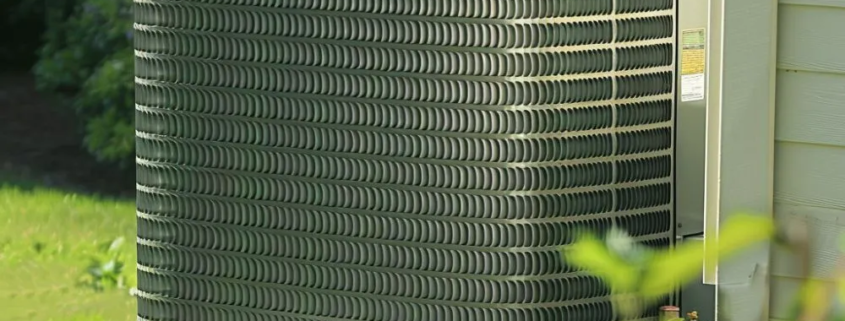How to Clean Air Conditioner Coils
Introduction
Air conditioners are crucial in maintaining indoor comfort, especially during scorching summers. However, regular maintenance is essential to ensure optimal performance and energy efficiency. One of the key maintenance tasks is cleaning the air conditioner coils. This comprehensive guide will explore the importance of clean coils and provide step-by-step instructions for effectively cleaning them.
What are Air Conditioner Coils?
Air conditioner coils are integral components responsible for the heat exchange process in your HVAC system. There are two types of coils: evaporator coils and condenser coils. Evaporator coils are inside the indoor unit, while condenser coils are in the outdoor unit.
Why Cleaning Air Conditioner Coils is Essential
Over time, air conditioner coils accumulate dirt, dust, and other debris. This buildup restricts airflow and hampers the heat exchange process, decreasing efficiency and increasing energy consumption. Additionally, dirty coils can cause system malfunctions and compromise indoor air quality.
Signs that Your Air Conditioner Coils Need Cleaning
- Reduced Cooling Efficiency:
- Noticeable decrease in cooling performance despite regular use.
- Increased Energy Bills:
- Higher energy consumption due to decreased system efficiency.
- Ice Formation:
- Ice buildup on the indoor or outdoor unit may indicate restricted airflow.
Materials Needed for Cleaning
Before proceeding with coil cleaning, gather the following materials:
- A soft brush or vacuum cleaner
- Fin comb
- Coil cleaner solution
- Gloves and protective eyewear
- Water hose or spray bottle
How to Clean Air Conditioner Coils
Cleaning Evaporator Coils:
- Turn Off the Power:
- Switch off the power supply to the air conditioner to prevent accidents.
- Access the Coils:
- Remove the access panel to reach the evaporator coils.
- Remove Debris:
- Gently brush or vacuum away any accumulated dirt and debris.
- Apply Cleaner:
- Spray the coil cleaner solution evenly on the coils.
- Wait and Rinse:
- Allow the cleaner to penetrate for the recommended time before rinsing with water.
Cleaning Condenser Coils:
- Power Off:
- Shut off the power to the outdoor unit to ensure safety.
- Remove Debris:
- Clear away leaves, grass, and other debris from the surrounding area.
- Access the Coils:
- Unscrew the protective grille to access the condenser coils.
- Clean Coils:
- Use a soft brush or fin comb to clean the coils in an upward motion gently.
- Rinse Thoroughly:
- Spray water from the inside out to rinse off dirt and cleaner residue.
Precautions to Take During Cleaning
- Always wear protective gear, including gloves and eyewear.
- Use caution when working with coil cleaner solutions to avoid skin and eye irritation.
- Avoid bending or damaging the fragile coil fins during cleaning.
Frequency of Cleaning
Ideally, air conditioner coils should be cleaned at least once a year to maintain optimal performance. However, more frequent cleaning may be necessary in environments with heavy dust or pollution.
Benefits of Clean Air Conditioner Coils
- Improved Efficiency:
- Clean coils facilitate better heat exchange, increasing efficiency and lowering energy bills.
- Enhanced Air Quality:
- Removing dirt and debris prevents the circulation of contaminants, improving indoor air quality.
Professional Coil Cleaning Services
While DIY cleaning is feasible for many homeowners, there are instances where professional services may be preferred. Consider hiring professionals if:
- The coils are heavily soiled or difficult to access.
- You need to gain the necessary tools or expertise for thorough cleaning.
DIY vs. Professional Cleaning
DIY Cleaning:
- Cost-effective and relatively simple for routine maintenance.
- Requires basic cleaning supplies and safety precautions.
Professional Cleaning:
- Ensures thorough cleaning, especially for complex or inaccessible coils.
- Saves time and effort for homeowners without DIY experience.
Tips for Maintaining Clean Coils
- Regularly inspect and clean air filters to prevent debris buildup on coils.
- Trim vegetation around the outdoor unit to maintain proper airflow.
- Schedule annual maintenance checks with HVAC professionals for comprehensive cleaning and inspections.
Common Mistakes to Avoid
- Using Harsh Chemicals:
- Avoid using abrasive or acidic cleaners that may damage the coil surfaces.
- Neglecting Regular Maintenance:
- Skipping routine cleaning and maintenance can lead to costly repairs and reduced lifespan of the HVAC system.
Conclusion
Proper maintenance of air conditioner coils is essential for optimal performance and energy efficiency. Following the recommended cleaning procedures and precautions outlined in this guide, homeowners can ensure their HVAC systems operate smoothly and provide comfortable indoor environments year-round.
FAQs
- How often should I clean my air conditioner coils?
- It’s recommended to clean the coils at least once a year, preferably before the cooling season begins.
- Can I use homemade solutions for cleaning air conditioner coils?
- While homemade solutions like vinegar and water may work for mild cleaning, it’s advisable to use commercial coil cleaner solutions for thorough results.
- Is it necessary to clean both the evaporator and condenser coils?
- Yes, evaporator and condenser coils should be cleaned regularly to maintain optimal efficiency and performance.
- Can dirty coils affect indoor air quality?
- Yes, dirty coils can harbor contaminants and mold, negatively impacting indoor air quality.
- What should I do if I encounter difficulties during DIY coil cleaning?
- If you encounter challenges or concerns during DIY coil cleaning, it’s best to consult HVAC professionals for guidance and assistance.




Leave a Reply
Want to join the discussion?Feel free to contribute!